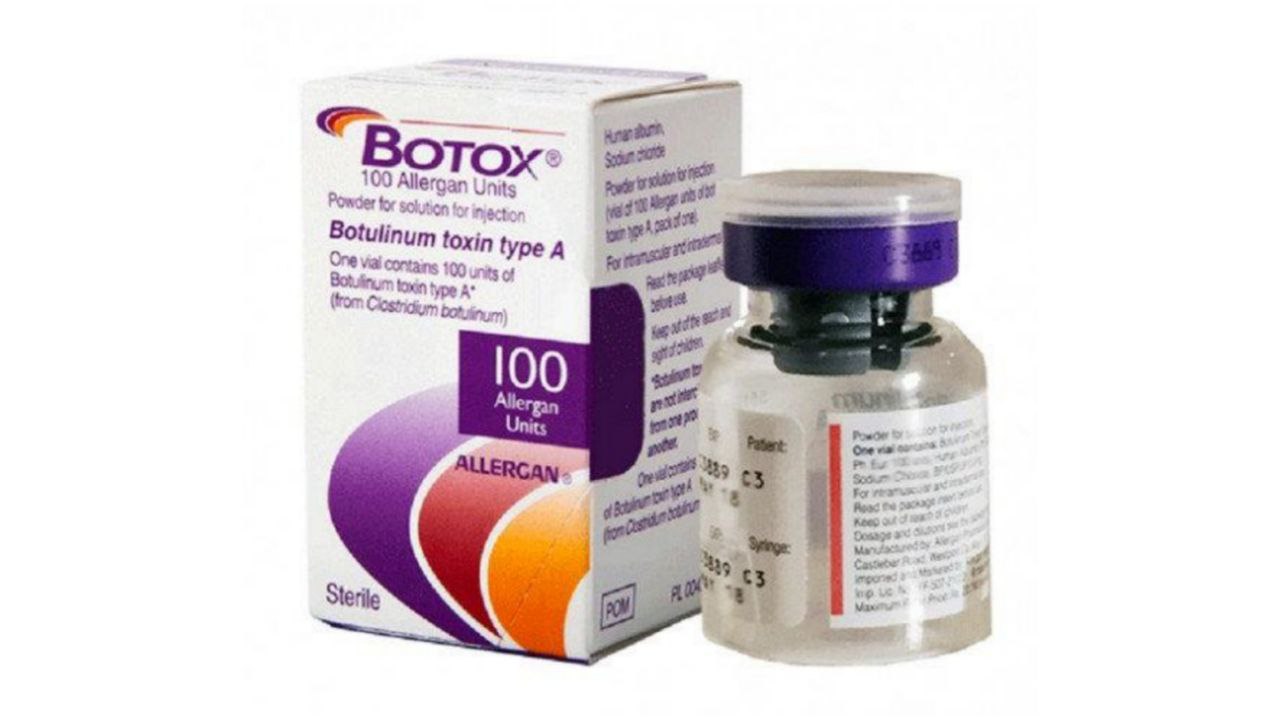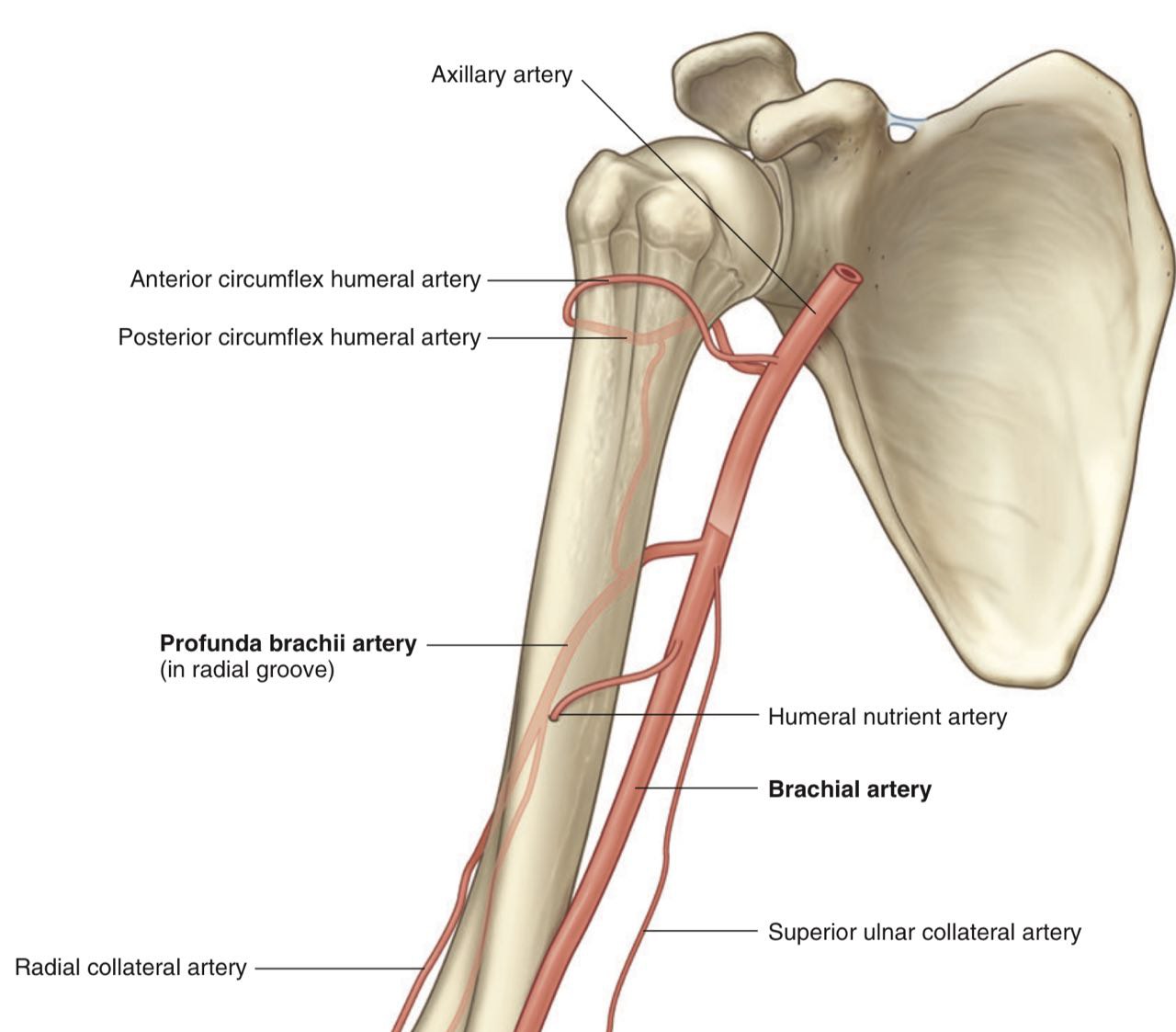
The brachial artery
By : Ma'ab MaladhOverview
The brachial artery provides the main arterial supply of the Whole upper limb, it starts as a continuation of the axillary artery at the lower border of Teres major and ends in the cubital fossa under the cover of the bicipital aponeurosis opposite to the neck of Radius by dividing into ulnar artery and radial artery .
Note
A sheet of connective tissue runs from the medial side of the bicipital tendon then merge the antebrachial fascia (the deep fascia of the forearm) covering the flexor muscles in the medial side of the forearm. It’s important to protect the structures laying under it in the cubital fossa (such as the brachial artery and the median nerve) and to lower the pressure of the bicipital tendon on the radial tuberosity ( the insertion of the biceps brachii) during pronation and supination (Fig.2)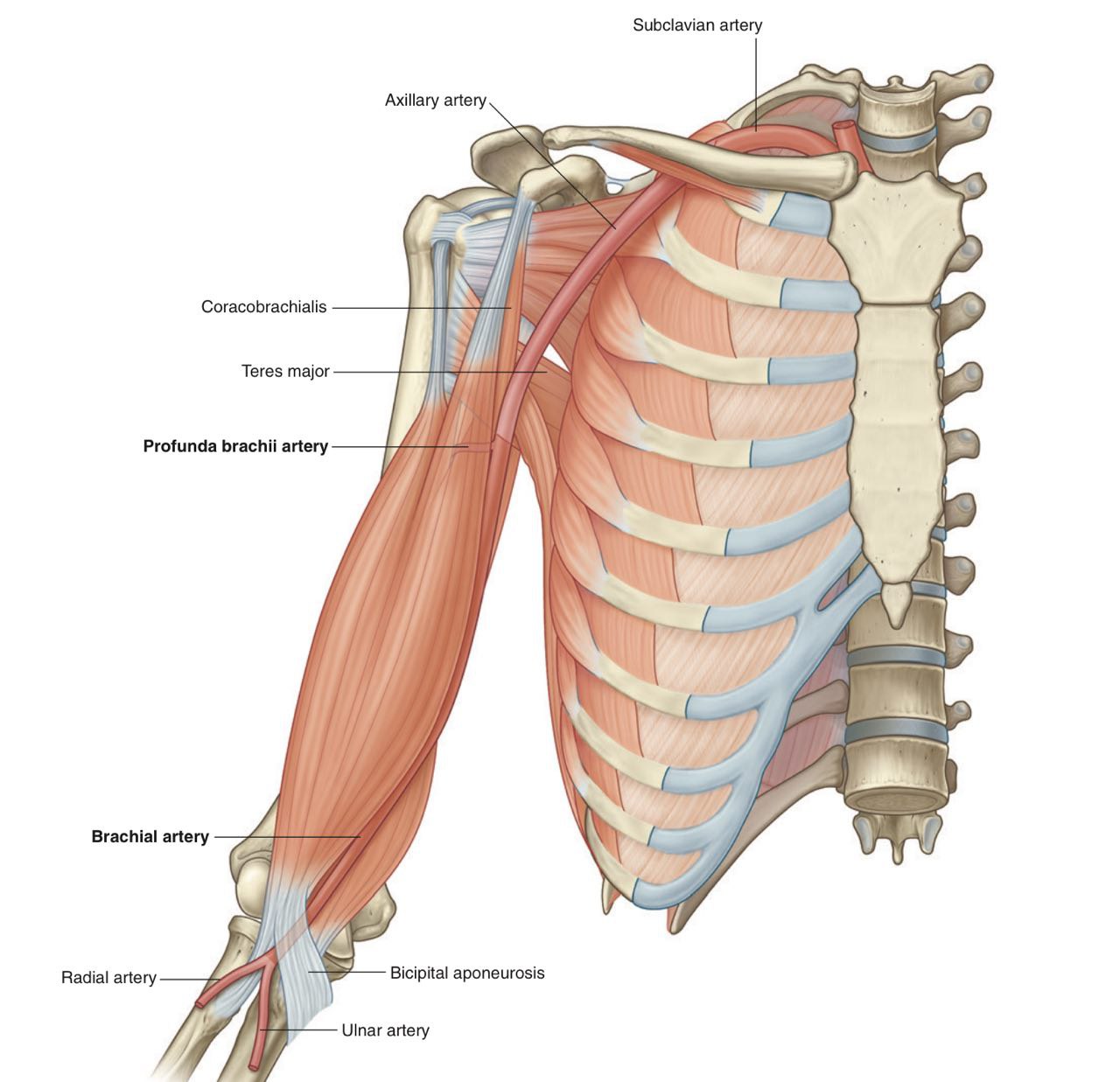
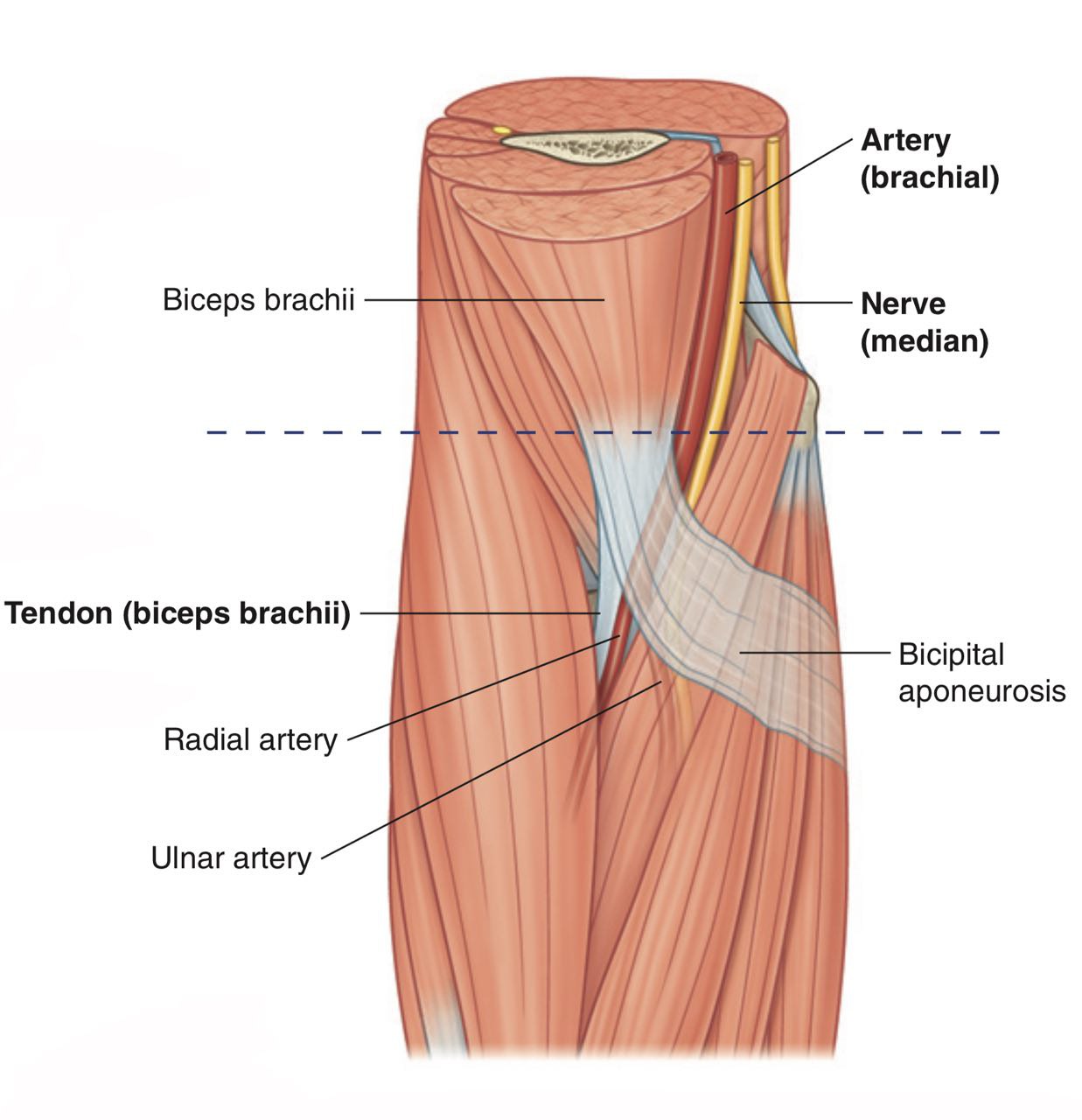
Fig.1 The brachial artery
Branches
1- Profunda brachii artery: The largest branch of the brachial artery.
Supplies the posterior compartment of the arm (the Triceps and Anconeus muscles),
The course:
Arises by the beginning of the brachial a. (has the most superior origin), then it enters the posterior compartment of the arm accompanied by the radial nerve and together they pass through the triangular interval into the spiral groove on the posterior surface of the humerus deep to the lateral head of triceps , it gives branch that anastomoses with the posterior circumflex humeral artery . It terminates as middle collateral a. and radial collateral a. Which contributes in the anastomosis around elbow.
Supplies the posterior compartment of the arm (the Triceps and Anconeus muscles),
The course:
Arises by the beginning of the brachial a. (has the most superior origin), then it enters the posterior compartment of the arm accompanied by the radial nerve and together they pass through the triangular interval into the spiral groove on the posterior surface of the humerus deep to the lateral head of triceps , it gives branch that anastomoses with the posterior circumflex humeral artery . It terminates as middle collateral a. and radial collateral a. Which contributes in the anastomosis around elbow.
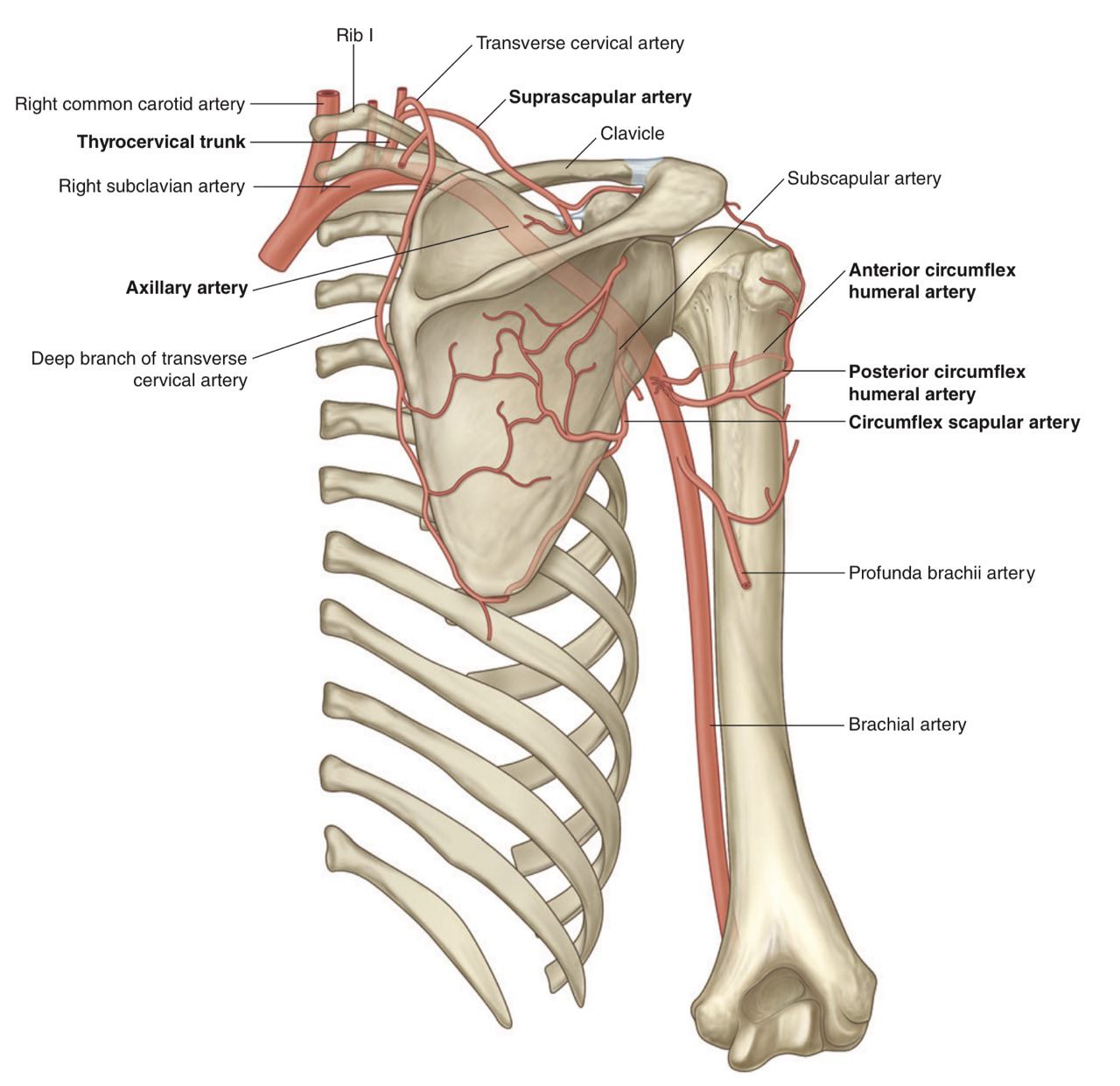
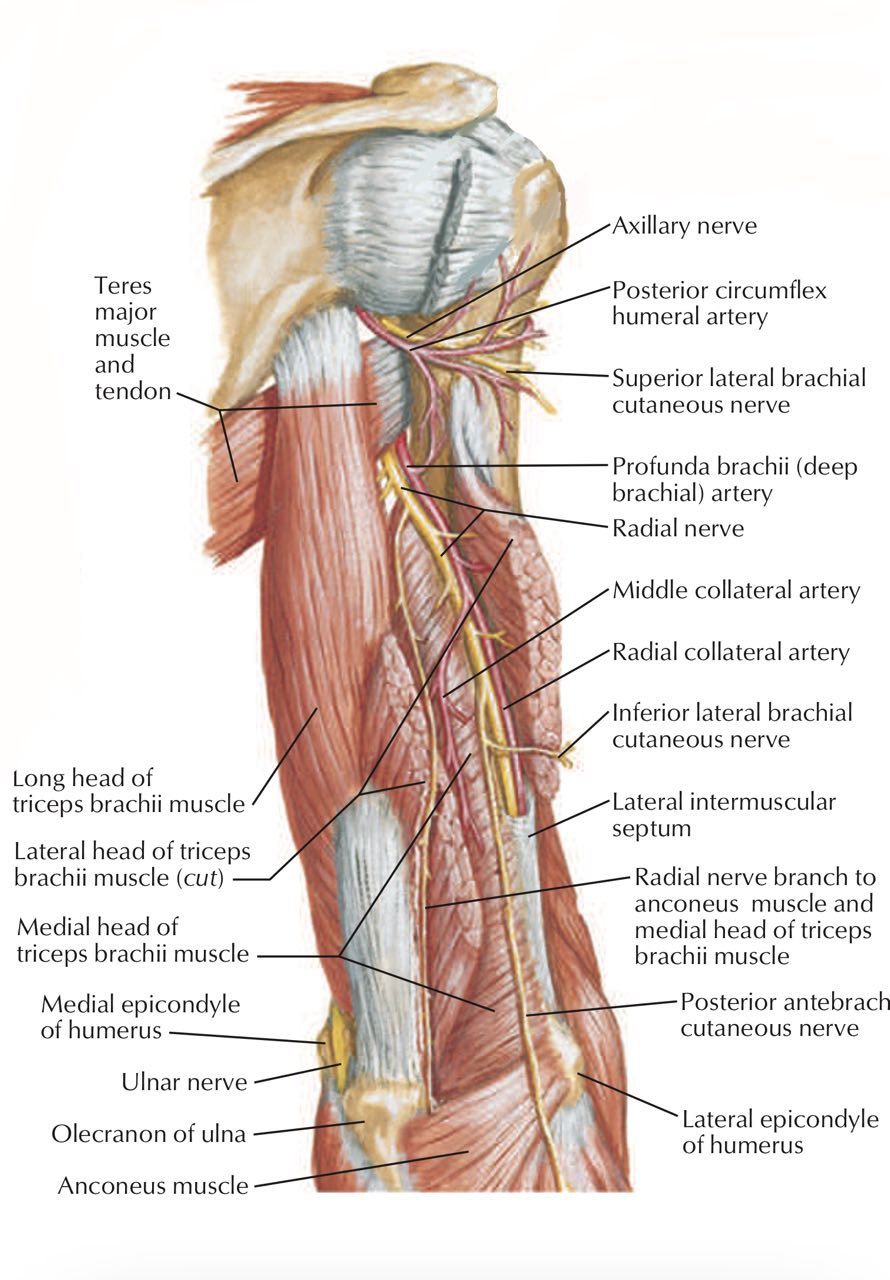
Fig.3 The profunda brachii artery
2- Humeral nutrient artery:
Nutrient means it supplies blood to the bone.
The main humeral nutrient artery arises from the brachial artery in the middle of the arm, and enters the nutrient canal on the anteromedial aspect of the humerus.
Other smaller humeral nutrient arteries occur.
3- Superior ulnar collateral artery:
Does not supply muscles only share in the anastomosis around elbow.
Arises from the medial aspect of the brachial artery by the middle of the arm, accompanies the ulnar nerve behind the medial epicondyle. Here it anastomoses with the posterior ulnar recurrent a. and the inferior ulnar collateral a. .
4- Inferior ulnar collateral artery:
Also does not supply muscles but share in the anastomosis around elbow.
Arises from the brachial artery by the termination of the artery, passes in front of the medial epicondyle. Here it anastomoses with the anterior ulnar recurrent artery.
5- Muscular branches that supply the anterior compartment (the Brachialis , Coracobrachialis , Biceps brachii muscles).
Nutrient means it supplies blood to the bone.
The main humeral nutrient artery arises from the brachial artery in the middle of the arm, and enters the nutrient canal on the anteromedial aspect of the humerus.
Other smaller humeral nutrient arteries occur.
3- Superior ulnar collateral artery:
Does not supply muscles only share in the anastomosis around elbow.
Arises from the medial aspect of the brachial artery by the middle of the arm, accompanies the ulnar nerve behind the medial epicondyle. Here it anastomoses with the posterior ulnar recurrent a. and the inferior ulnar collateral a. .
4- Inferior ulnar collateral artery:
Also does not supply muscles but share in the anastomosis around elbow.
Arises from the brachial artery by the termination of the artery, passes in front of the medial epicondyle. Here it anastomoses with the anterior ulnar recurrent artery.
5- Muscular branches that supply the anterior compartment (the Brachialis , Coracobrachialis , Biceps brachii muscles).
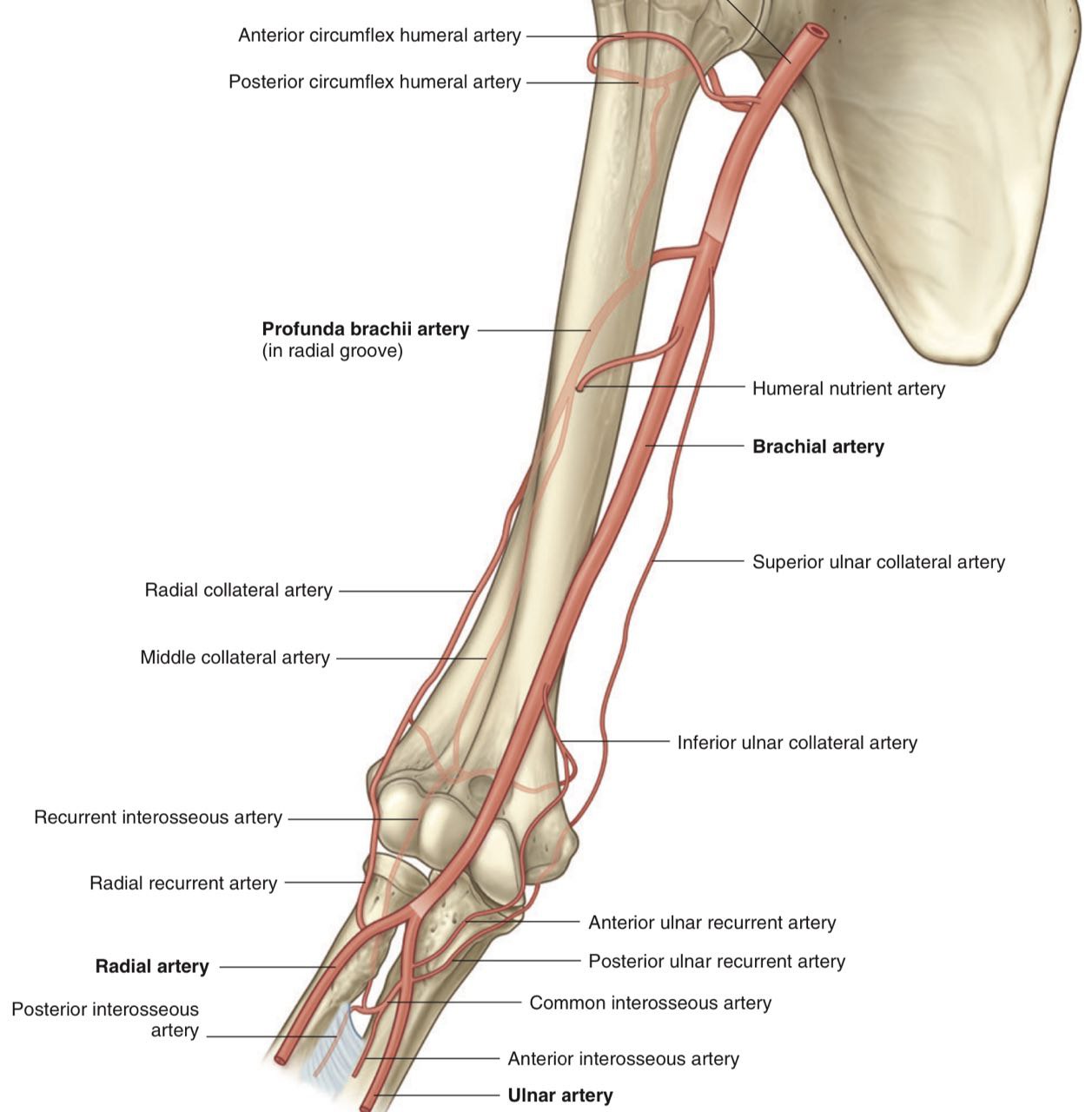
Fig.5 Branches of the brachial artery
Clinical notes
The brachial artery is used for blood pressure measurement because it’s relatively superficial and palpable through its course, at the beginning it lies medial to the humerus where the pulsation is palpable in the medial bicipital groove , so we use it to measure the blood pressure using a stethoscope and sphygmomanometer . The cuff of the sphygmomanometer is placed around the middle portion of the arm to compress the brachial artery to the humerus, and the stethoscope is placed over the brachial artery in the cubital fossa to listen to the pulse.
In cardiac catheterization beside the femoral artery and vein in the thigh and the superficial veins in the arm we use the brachial a., in normal situations in the upper limb we use the radial a. from the wrist to insert the catheter, but when the radial access is not possible we use the brachial a. instead of the radial artery .
In cardiac catheterization beside the femoral artery and vein in the thigh and the superficial veins in the arm we use the brachial a., in normal situations in the upper limb we use the radial a. from the wrist to insert the catheter, but when the radial access is not possible we use the brachial a. instead of the radial artery .
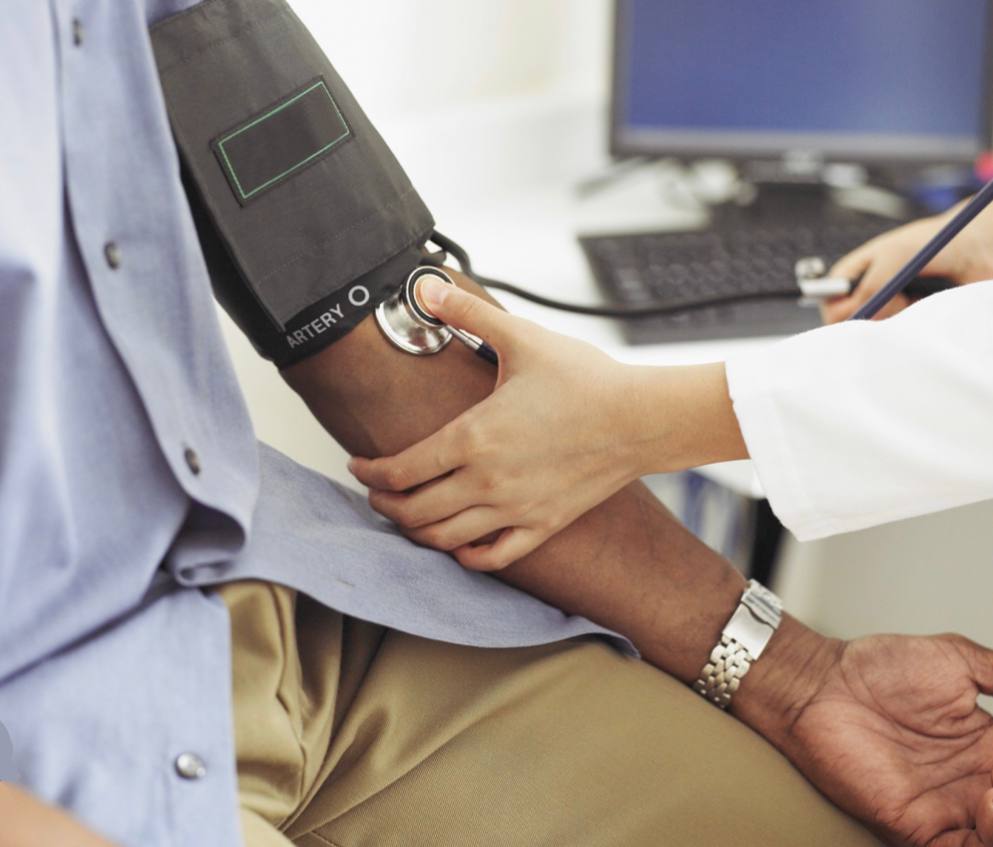
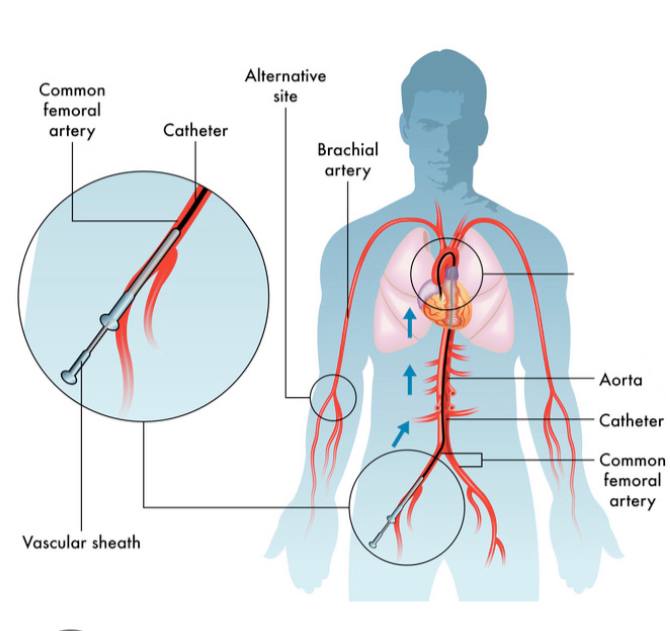
Fig.6 Blood measurment
References
1. Moore, K. L., Dalley, A. F., & Agur, A. M. (2014). Clinically oriented anatomy 7th edition,S.736.
2. Drake, R., Vogl, A. W., Mitchell, A. W., Tibbitts, R., & Richardson, P. (2020). Gray's Atlas of Anatomy E-Book. Elsevier Health Sciences, S.745.
3. Snell, R. S. (2012). Snell's Clinical Anatomy by Regions. 9th South Asian ed.,S.374.
Image references:
1. Drake, R., Vogl, A. W., Mitchell, A. W., Tibbitts, R., & Richardson, P. (2020). Gray's Atlas of Anatomy E-Book. Elsevier Health Sciences, Fig. 7.39, 7.66.A, 7.66.B,
2. Frank, H. N. (2018). Netter Atlas of Human Anatomy 7th Ed 2018.Plate 422.
2. Drake, R., Vogl, A. W., Mitchell, A. W., Tibbitts, R., & Richardson, P. (2020). Gray's Atlas of Anatomy E-Book. Elsevier Health Sciences, S.745.
3. Snell, R. S. (2012). Snell's Clinical Anatomy by Regions. 9th South Asian ed.,S.374.
Image references:
1. Drake, R., Vogl, A. W., Mitchell, A. W., Tibbitts, R., & Richardson, P. (2020). Gray's Atlas of Anatomy E-Book. Elsevier Health Sciences, Fig. 7.39, 7.66.A, 7.66.B,
2. Frank, H. N. (2018). Netter Atlas of Human Anatomy 7th Ed 2018.Plate 422.
